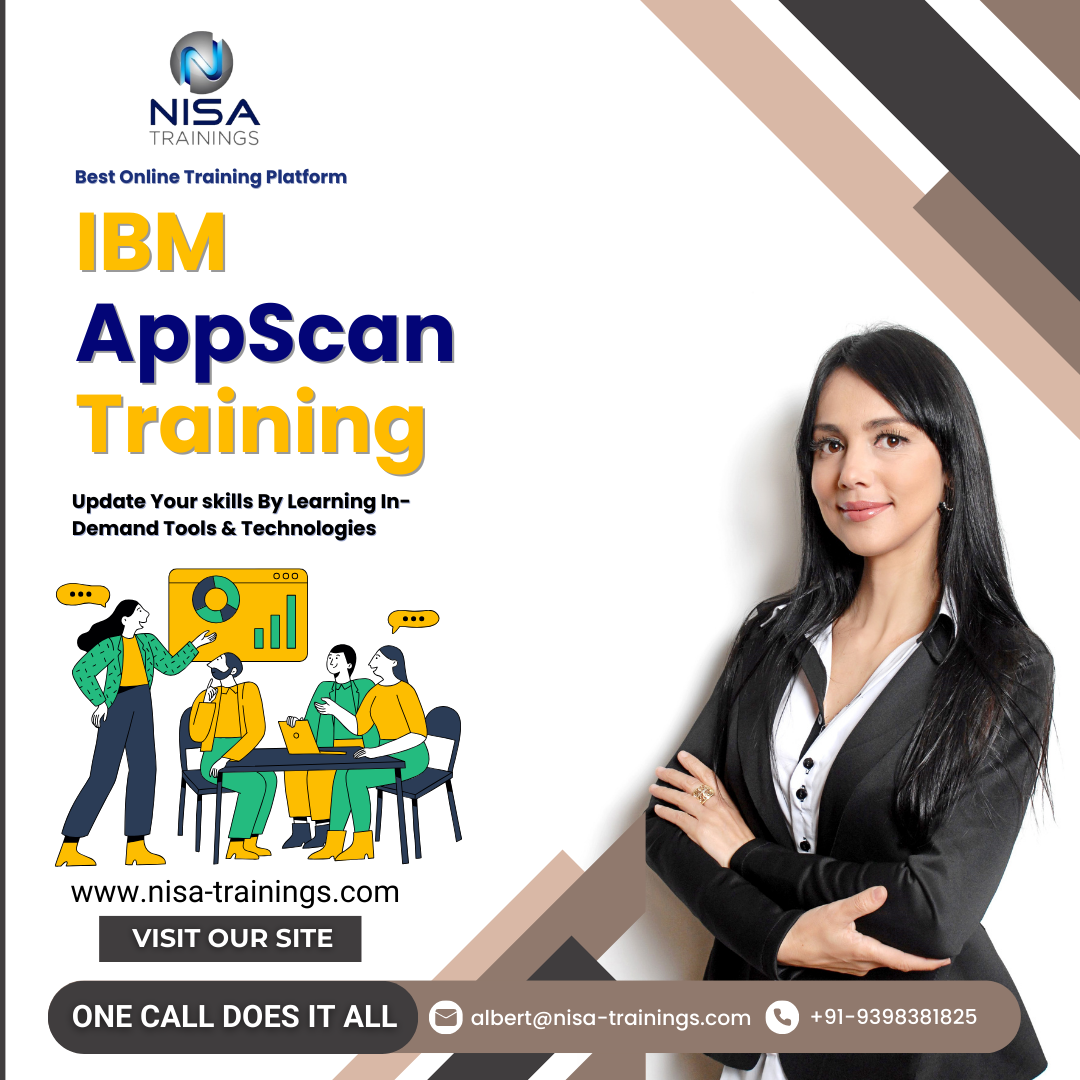IBM AppScan Training
IBM AppScan is a suite of security tools designed for identifying, managing, and remediating security vulnerabilities in web applications. It provides solutions for both static and dynamic application security testing (SAST and DAST), helping developers and security teams address vulnerabilities throughout the development lifecycle.

Why should you choose Nisa For IBM AppScan Training?
Nisa Trainings is the best online training platform for conducting one-on-one interactive live sessions with a 1:1 student-teacher ratio. You can gain hands-on experience by working on near-real-time projects under the guidance of our experienced faculty. We support you even after the completion of the course and happy to clarify your doubts anytime. Our teaching style at Nisa Trainings is entirely hands-on. You’ll have access to our desktop screen and will be actively conducting hands-on labs on your desktop.
Job Assistance
If you face any problem while working on IBM AppScan Course, then Nisa Trainings is simply a Call/Text/Email away to assist you. We offer Online Job Support for professionals to assist them and to solve their problems in real-time.
The Process we follow for our Online Job Support Service:
- We receive your inquiry for Online Job
- We will arrange a telephone call with our consultant to grasp your complete requirement and the tools you’re
- If our consultant is 100% confident in taking up your requirement and when you are also comfortable with our consultant, we will only agree to provide service. And then you have to make the payment to get the service from
- We will fix the timing for Online Job Support as mutually agreed by you and our consultant.
Course Information
IBM AppScan Training
Duration: 25 Hours
Timings: Weekdays (1-2 Hours per day) [OR] Weekends (2-3 Hours per day)
Training Method: Instructor Led Online One-on-One Live Interactive
Sessions.
COURSE CONTENT :
1. Introduction to IBM AppScan
- Overview of AppScan products (Static Application Security Testing (SAST), Dynamic Application Security Testing (DAST), and Interactive Application Security Testing (IAST)).
- How AppScan fits into the software development lifecycle (SDLC).
- The importance of application security and the role of AppScan in identifying vulnerabilities.
2. Setting Up IBM AppScan
- Installing and configuring AppScan on various environments (Windows, Linux, or cloud-based configurations).
- Integrating AppScan into development and CI/CD pipelines.
- Configuration of scan policies and setting up security rules.
3. Static Application Security Testing (SAST)
- How to perform SAST with AppScan.
- Analyzing source code or binaries for vulnerabilities.
- Customizing security rules for SAST scans.
- Reviewing the results from static scans and interpreting findings.
4. Dynamic Application Security Testing (DAST)
- How to perform DAST with AppScan.
- Scanning live applications or websites for vulnerabilities.
- Configuring and running dynamic scans on web applications and APIs.
- Understanding how AppScan simulates real-world attacks to identify vulnerabilities.
5. Interactive Application Security Testing (IAST)
- Overview of IAST and its features.
- Combining dynamic and static scanning techniques for deeper insights.
- How IAST can enhance security testing in runtime environments.
6. Managing Vulnerabilities
- How to interpret scan results and prioritize vulnerabilities based on risk.
- How to integrate AppScan with other tools (e.g., JIRA, Jenkins) to automate vulnerability management.
- Best practices for remediation and continuous monitoring.
7. AppScan for DevOps and CI/CD Integration
- Integrating AppScan into DevOps pipelines.
- Running scans during build and deployment processes using Jenkins, Azure DevOps, etc.
- Automating scans and handling vulnerabilities in the pipeline.
8. Advanced Features
- Using advanced reporting and dashboards in AppScan to track security metrics.
- Customizing reports for different stakeholders (developers, security teams, managers).
- Conducting audits and compliance reporting.
9. Troubleshooting and Best Practices
- How to troubleshoot common issues with AppScan.
- Optimizing scan performance.
- Best practices for ensuring comprehensive coverage of security testing.
